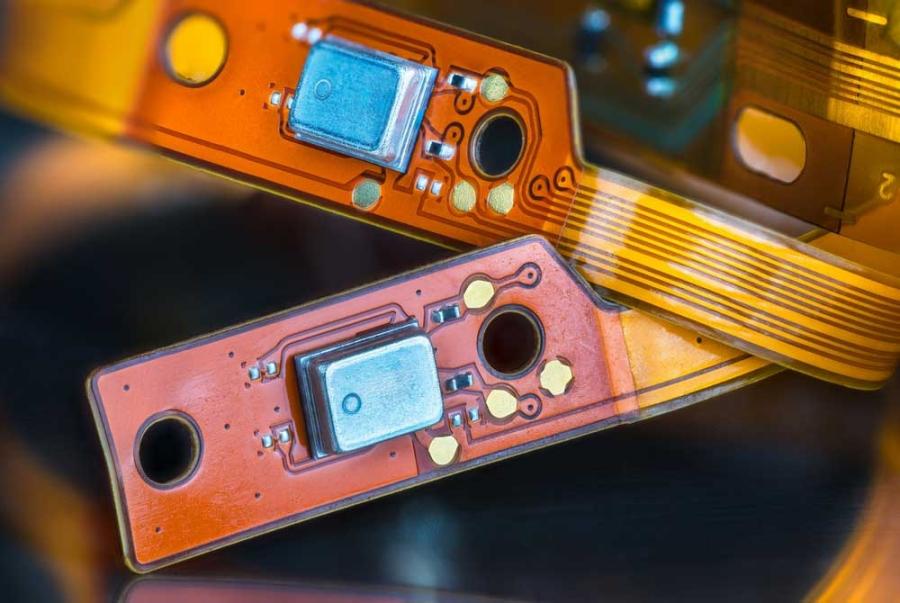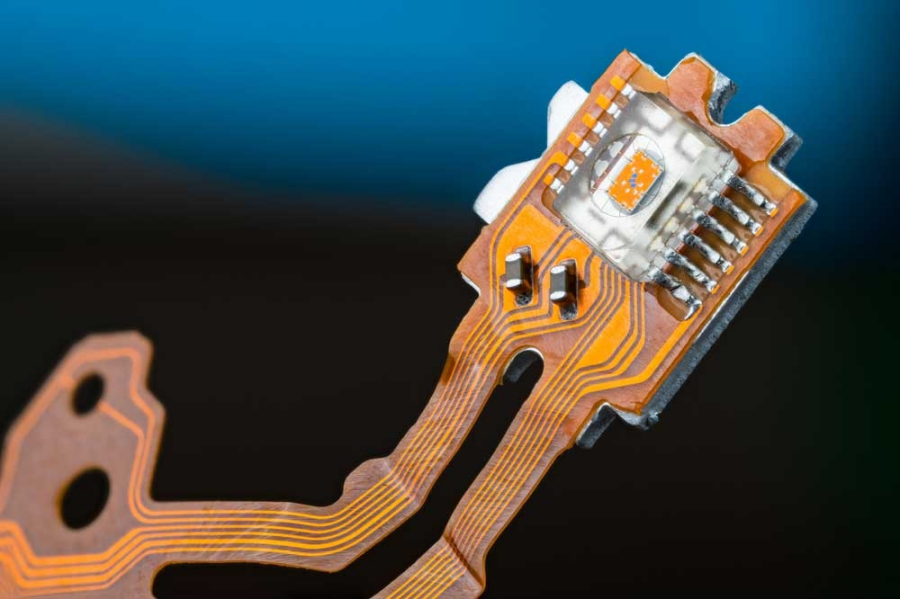Flexible Printed Circuit Boards (FPCs) are transforming electronics projects with their exceptional adaptability and efficiency. Designed to flex and bend, FPCs are crucial for compact and dynamic devices, setting them apart from traditional rigid PCBs. Their inherent flexibility enables both DIY hobbyists and professionals to explore more inventive and efficient design solutions. In this introduction, we will delve into the essentials of DIY flexible PCBs, discuss their pivotal role in contemporary electronics, and examine how they enable inventors to realize their innovative concepts.

Understanding Flexible PCBs
Definition and Structure
As a leading exporter in the flexible printed circuit board (FPCB) industry, Best FPC specializes in the quick-turn manufacturing of both polyimide and polyester FPCBs. Serving a diverse range of markets such as medical, aerospace, industrial, and various consumer electronics, Best FPC has established itself as a pivotal player in advancing FPC technology.
Advantages Over Traditional PCBs
Flexible PCBs offer several advantages over their rigid counterparts. Primarily, their flexibility allows for more compact and dynamic designs, essential in modern miniaturized electronics. They are lighter, can be bent to fit into irregular shapes, and typically require fewer interconnects, which reduces overall system complexity. This flexibility also results in enhanced reliability under mechanical stress and better performance in harsh environments, making them ideal for high-demand applications.
Applications in Various Industries
The versatility of FPCs makes them suitable for a wide range of industries. In the medical field, they are used in compact wearable devices and advanced diagnostic equipment. Aerospace applications benefit from their lightweight and high reliability in extreme conditions. In the consumer electronics sector, FPCs are found in everything from smartphones to sophisticated cameras, contributing to lighter and more resilient designs.
Overview of Best FPC Manufacturing Techniques
Manufacturing Processes
Best FPC utilizes a variety of materials in their manufacturing processes, with Polyimide (PI) being the most prominent. Known commercially as "Kapton" and produced by Dupont Corporation, Polyimide stands out for its excellent thermal stability (withstanding temperatures over 500°C), mechanical toughness, and chemical resistance. These properties make it the ideal material for FPCs, offering excellent dielectric properties and a low coefficient of thermal expansion essential for high-performance applications.
Introduction to DIY Techniques
At Best FPC, flexible circuit board design is categorized into OEM and ODM. OEM (Original Equipment Manufacturer) design involves producing batches based on original designs and materials provided by customers. This method is typical for clients who have a precise blueprint of what they need. On the other hand, ODM (Original Design Manufacturer) services involve creating customized designs and selecting integrated circuits (ICs) based on the customer’s specific applications and performance requirements. This approach is preferred by clients looking for tailored solutions in the design and functionality of their electronic products.
DIY Flexible PCB Fabrication Techniques
ODM Flex PCB Design
Schematic Drawing for Your Specified Product
At Best FPC, ODM Flex PCB design means providing customized circuit solutions without requiring a customer-supplied schematic. We design based on various parameters such as application, performance, impedance, current, voltage, and bending frequencies, ensuring the design meets specific needs. This service is ideal for clients unfamiliar with circuit board intricacies or those in the midst of iterative product updates. Leveraging 16 years of industry experience, Best FPC offers tailored ODM solutions to address unique challenges.

ODM Flex Circuit Shape Design
Custom Printed Design Flex Circuit Layout
Our approach to ODM flex circuit design involves crafting the shape and layout of the PCB according to product-specific requirements like size, shape, voltage, and impedance. This method is particularly beneficial for clients with limited knowledge of circuit boards, providing them with expertly designed, application-specific PCBs.
OEM FPC Routing
Engineer Checks Clients' Gerber File or Drawing
OEM PCB design at Best FPC starts when clients provide their own design files, such as Gerber or BOOM formats. Our engineers then process these files, performing thorough reviews to identify any design flaws and suggest more cost-effective materials without compromising quality. This critical review helps enhance the final product's design efficiency and cost-effectiveness.
OEM Design 3D PCB Display
3D Display of PCB Model Can Show More Details
A 3D model display allows for a comprehensive review of the PCB's design, helping both designers and clients confirm the absence of overlooked flaws. After thorough checks by our engineering team, the PCB undergoes either prototyping or mass production. Post-production, each unit is methodically tested to ensure all parameters meet the required standards.
Testing and Quality Assurance
Quality assurance is paramount at Best FPC. Our warranty policy covers any potential defects in our flexible circuits and printed circuits (FPC), adhering to ISO 9001:2000 quality management standards. Our quality management system is meticulously structured to ensure customer satisfaction by delivering defect-free products that meet specified requirements and are delivered punctually.
Our commitment to quality permeates all company activities. We strictly follow ISO9001:2000 protocols across all stages— from material procurement and manufacturing to testing, packaging, and marketing. During FPC production, every piece undergoes rigorous on-site and final inspections to maintain the highest quality standards, ensuring that our clients receive only the best products.
Advanced Techniques and Customizations
Adding Components to Flexible Substrates
Recent advances in flexible PCB (FPC) technology have facilitated the integration of a diverse array of electronic components directly onto flexible substrates. This integration utilizes surface-mount technology (SMT), which precisely mounts components onto the flexible circuit. This method not only enhances the functionality of FPCs but also preserves their essential flexibility, vital for applications with restricted space and specific form factor requirements.
Incorporating Sensors and Actuators
The scope of FPC applications is broadening with the addition of sensors and actuators. Sensors in FPCs can monitor environmental variables such as temperature, humidity, or pressure, while actuators transform electrical signals into physical actions. This integration allows FPCs to power devices that are highly interactive and responsive, proving invaluable in industries like healthcare, automotive, and robotics.
Integrating FPCs into Wearable Electronics
The pliability and lightweight characteristics of FPCs make them perfect for wearable electronics. These circuits easily mold to the human body's contours, ensuring comfort and durability without sacrificing functionality. The use of FPCs in wearables has spurred innovations in smart apparel, fitness monitors, and sophisticated medical tracking devices, showcasing the versatility and potential of flexible electronics in personal tech.
Future Trends and Innovations in Flexible PCB Technology
Emerging Materials and Manufacturing Processes
Looking ahead, FPC technology is evolving with the introduction of new materials like liquid crystal polymer (LCP) and advancements in 3D printing technologies. LCP is known for its exceptional flexibility, thermal stability, and chemical resistance, key for high-performance applications. Concurrently, 3D printing is transforming FPC manufacturing by enabling the creation of more complex structures and the integration of multiple materials in one production phase.
Potential Impact on DIY Electronics
With the increasing availability of new materials and advanced manufacturing processes, DIY enthusiasts and hobbyists are poised to explore unique FPC designs. This access is expected to fuel innovation in home-built electronics, enabling individuals to customize FPCs for specific uses, thus expanding the possibilities of personal electronic projects.
Predictions for the Future of DIY FPCs
The future of DIY FPCs is expected to feature enhanced customization and the incorporation of complex electronic components, such as microcontrollers, sensors, and IoT functionalities. As these tools and materials become more economical and user-friendly, a rise in innovative applications is anticipated, ranging from smart home devices to customized wearable tech. This shift towards technology democratization will enable more people to construct sophisticated devices at home, potentially leading to groundbreaking developments in technology usage and interaction.
In Closing
Mastering the art of DIY flexible PCB creation involves embracing the cutting-edge techniques and customizations offered by Best FPC. From adding intricate components to integrating sensors and actuators, these strategies enhance the versatility and functionality of FPCs, especially in compact and wearable technologies. Looking forward, the introduction of innovative materials and methods, such as 3D printing and liquid crystal polymer, promises to further revolutionize the field. For DIY enthusiasts, these advancements open up a world of possibilities, allowing for the design of highly customized, efficient, and sophisticated electronic devices. Embracing these techniques ensures that anyone can be at the forefront of flexible PCB technology, crafting devices that push the boundaries of what's possible in electronics.










 2024-05-20
2024-05-20
 BEST
BEST

.png)
.png)
.png)
.png)

.png)

